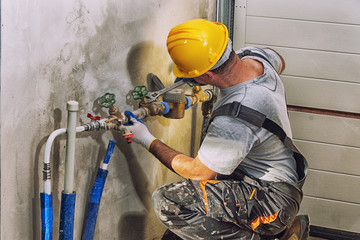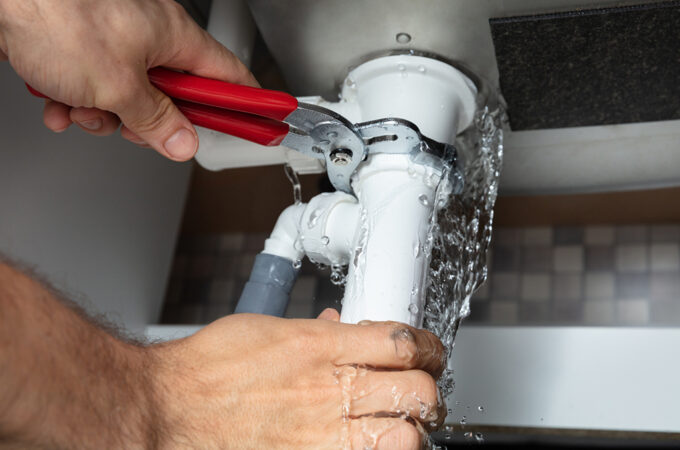Water Heater Repair Tips
A water heater that’s leaking should be replaced immediately to minimize damage and possible health risks. However, it can sometimes be repaired if the problem is less severe, such as an outdated pilot light or a thermostat set too low.
Banging and popping sounds inside the tank can be caused by mineral buildup that must be flushed out. This can be done easily by experts like Water Heater Repair Denver.
Many electric water heaters have two thermostats and a high-temperature cutoff switch. If yours isn’t producing hot water, a check of the heating elements might reveal that one or both are faulty. However, since the typical life span of a water heater is 10 years or more, it might be cheaper to simply replace the unit rather than attempt repair.
Before attempting any electrical testing or water heater repair, turn off the power to the unit at your circuit breaker or service panel. It’s important to do this step before repairing your water heater because working with electricity can kill you.
Once the power is off, use a screwdriver or nut driver to remove the access panels and insulation on both the upper and lower thermostats. Many newer electric water heaters also have a plastic safety cover that needs to be removed as well. Once the covers and insulation are removed, take a multimeter to the wiring connection points on both thermostats. Touch the black lead to one of the left-side terminals on the thermostat and the red lead to the other left side terminal. If the meter reads zero ohms, the thermostat is functioning correctly. Repeat the process on the right side of the thermostat for continuity checks.
If the meter reading is close to zero ohms, then the thermostat has failed. You can replace the upper or lower thermostat, but it’s generally a good idea to replace both so that if one starts to fail soon after you replace it with a working one, you have a replacement ready to install.
If the meter reads an infinity, then the thermostat has failed completely and it should be replaced immediately. The same process can be used to test the heating elements in the same manner, although you should remember that replacing an old element with a new one could shorten its lifespan and lead to premature failure of the new one. If the thermostat and element tests prove to be faulty, you’ll need to consider replacing your water heater altogether. If it’s time for a new one, you can follow our Water Heater Installation Guide to help you get started.
Element
Often, hot water heater issues are related to electrical components like the heating elements, thermostats and pressure relief valves. These can be fairly inexpensive to fix, and not always worth replacing the whole unit. However, if the tank has rust and fractures or leaks around the water line and puddles around it, this isn’t something that can be fixed; the unit must be replaced. The same goes for sediment that builds up inside the tank, which not only accelerates damage to the tank but also can spread throughout your plumbing system clogging aerators and supply lines.
It’s important to understand when a repair will suffice and when it’s time to replace your water heater. A professional can help you weigh the repair vs. replacement decision for your home.
Dip Tube
Dip tubes are exposed to both hot and cold water, and as a result can be subject to wear and tear. The plastic material is subject to degradation over time, and if it breaks or erodes it can cause problems with your water heater. If the dip tube fails you may not get enough hot water for your home, and it can also lead to clogged faucets and appliances. A water heater service professional can replace your dip tube for you, but you can also do it yourself with some simple tools.
If you have enough space, you can drain your water heater to eliminate any sloughed off particles that have made their way into your home’s hot water system. While draining, flush the water heater’s internal plumbing, including the sacrificial anode rod and any screens or aerators. After a few hours, test the new dip tube to see if it works properly. To do this, place a few small particles of the plastic in a glass of water. If the particles float, they’re probably plastic; if they sink, they’re most likely sediment.
A broken dip tube will reduce the amount of hot water you have, and it can be easy to overlook if your family is already complaining about lack of hot water. The repair is fairly simple, but it will require some work and a bit of patience. To start, turn off the circuit breaker that delivers power to your water heater, and close the water supply valve at the water heater. Next, disconnect the cold water inlet pipe and remove the nipple at the top of your tank to expose the dip tube. Remove the old dip tube, and insert a new one that is sized correctly for your tank. Be sure to choose a dip tube that’s made from durable materials, such as cross-linked polyethylene.
With the new tube in place, reconnect the nipple and cold water supply line, and restore power or gas to your water heater. Now you can enjoy a steady supply of hot water.
Pressure Valve
A water heater, especially a tank model, can build up pressure over time. This is why the temperature and pressure relief valve, or T&P valve, opens to release excess steam and water when its lever is raised. If the pressure rises too high, the tank could explode. This is why the T&P valve is installed, and why it’s so important to keep it functioning properly.
If the valve doesn’t open when its lever is raised, or it takes too long to open, it’s time to call a plumber. This may be a sign of other problems with your water heater, and it’s worth getting it checked out to make sure the safety valve is working as intended.
You can test your T&P valve by putting a bucket under the discharge tube and pulling the metal lever open. If a small amount of water–a quarter cup or so–discharges into the bucket, this is a good indication that your valve is functioning as it should. The water should stop flowing once the lever snaps back into place.
Once you’ve determined that the T&P valve isn’t functioning as it should, it’s time to replace it. This is an easy job that requires only a pipe wrench and plumber’s tape, although you’ll also need new piping that is rated for hot water (usually CPVC) if your original pipe isn’t in good shape.
Start by shutting off the power to your water heater. This may be done by turning off the gas (if you have a gas water heater) or the electric breaker if you have an electric tank. Next, disconnect the overflow pipe from the T&P valve. If the overflow pipe is soldered or glued to the valve, you’ll need to use a pipe wrench and plumber’s tape to disassemble it. Then, remove the valve from its opening and screw the new one in until it’s tight, making sure to orient the overflow pipe opening away from the tank. Reattach the overflow pipe using Teflon tape and a pipe wrench, remembering to use CPVC pipe glue instead of PVC.


